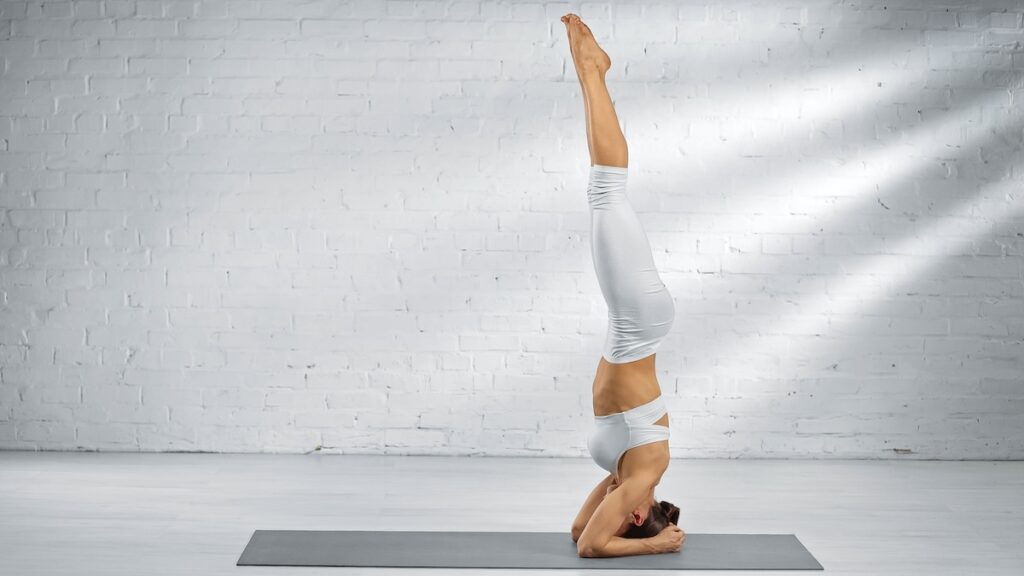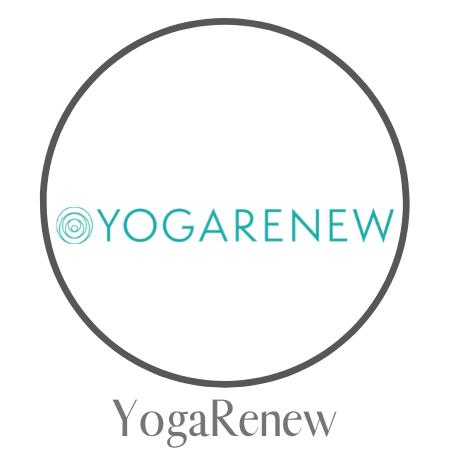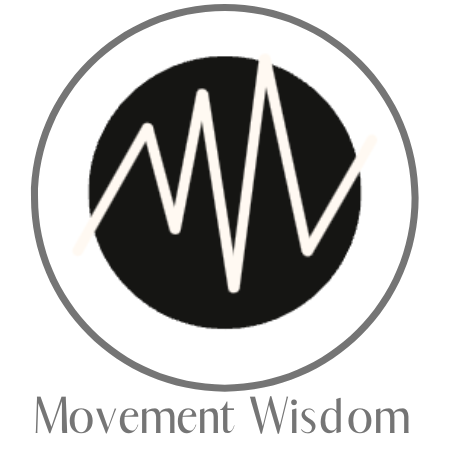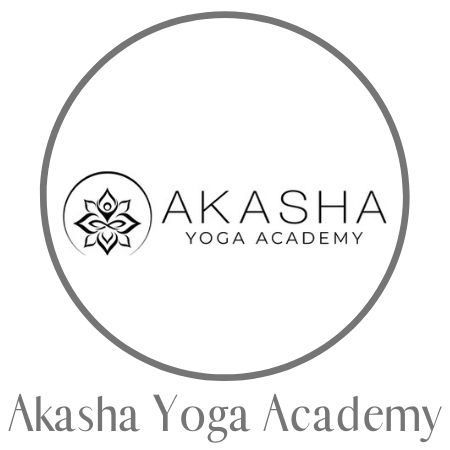The Kapha dosha keeps us calm, patient, and grounded. But when dominant or unbalanced, it can cause physical and mental sluggishness. If you want to increase your energy and concentration, try yoga for Kapha dosha.
If you are constantly tired, no matter how much sleep you get, experience lethargy or lack of motivation, or you struggle to motivate yourself and often need encouragement from others this could be due to your dosha constitution.
In this article, I’m sharing the strengths and weaknesses of Kapha and how yoga can enhance this dosha’s positive qualities.
Article content:
(Click any link below to jump directly to section)
Benefits of yoga for Kapha dosha
As yoga is revitalizing, people with unbalanced Kapha find it helps motivate them into action.
Kapha types particularly benefit from a morning yoga practice. Although they may not feel like moving their body first thing in the morning, pushing themselves to do so will help them feel more energized and motivated for the rest of the day.
Yoga for Kapha dosha involves incorporating the dosha’s opposite qualities – light, mobile, and warm. Therefore, dynamic yoga styles like Vinyasa, Ashtanga, and Bikram yoga are ideal. Here are some ways practicing yoga can benefit Kapha dosha:
- Energizing – Dynamic yoga styles release stagnation in the body and mind and make you feel more alert and awake.
- Heating – People with dominant Kapha dosha tend to feel physically cold and heavy. Yang yoga styles increase the body temperature and aid flexibility.
- Reduced stiffness – Yoga lubricates the joints, which makes you feel more mobile and light.
- Improved respiratory health – Kapha types are prone to colds and upper respiratory infections. Regular yoga and breathwork can help clear congestion in the lungs and sinuses and boost immune function.
- Metabolism boost – Dynamic yoga styles get things moving in the digestive tract, improving metabolism and increasing energy levels.
5 yoga poses to balance Kapha dosha
To balance Kapha dosha, you should include energizing asanas like standing poses, backbends, and inversions. Include several rounds of sun salutations and flowing sequences, too.
Inversions are particularly good for Kapha people as they send fresh blood and oxygen to the brain, resulting in a mentally invigorating effect.
Likewise, backbends send blood to the heart and lungs, energizing the body and improving the functioning of the respiratory and cardiovascular systems.
Lastly, don’t forget twists – they will help counteract sluggish digestion, which contributes to a lack of energy. Here are five yoga poses that balance Kapha dosha:
1. Camel pose
Camel pose, also called Ustrasana, is an advanced backbend that brings the head level to or lower than the heart. So not only does it increase blood circulation in the heart and lungs, but also in the brain. As a result, this is one of the most physically and mentally invigorating asanas. Here’s how to do Camel:
- Start in a kneeling position with your knees hip-width apart. Bring your hands to your lower back with the fingers facing down.
- On an inhale, lengthen the spine. Start to lean back on an exhale, pushing the chest forward. If your neck feels ok, drop it back, gazing behind you.
- Stay here in this supported variation, or if it feels okay, bring your hands to your heels (or blocks beside each foot).
- Keep your hands on your heels or blocks as you lean back further, continuing to push your heart forward.
- Hold for five breaths, then slowly return to the starting position. Sit on your heels, taking a few moments in this neutral position.

2. Warrior 1
Warrior 1, also called Virabhadrasana I, physically strengthens the lower and upper body, it generates heat, helping to combat feelings of lethargy. Here’s how to do Warrior 1:
- From mountain pose (Tadasana), step your right foot back, turning it out to 45 degrees. Try to align both heels, but increase the width if your hips feel tight.
- Bend the front leg, bringing the knee directly over the ankle. Keep the back leg straight.
- Keep your hips facing forward and ground both feet into the mat, equally distributing weight into both legs.
- Next, reach your arms overhead, bringing the upper arms in line with your ears and palms facing each other. Relax your shoulders and gaze slightly up.
- Hold this pose for 5 to 10 breaths, step back to Tadasana, and repeat on the other side.

3. Chair pose
Chair pose, also called Utkatasana, increases heat generation within the body. It involves reaching the arms overhead, and it has the extra challenge of sitting in a squatted position with the knees bent, which builds heat. Here’s how to do Chair pose:
- Bring your feet together in the mountain pose (Tadasana) or slightly apart if your hips feel stiff.
- Keep your hands on your hips as you bend your knees and lower your hips, sitting in an invisible chair.
- Check that you can still see your toes when you look down. If not, shift your hips back while keeping a straight spine.
- Ground into both feet and engage the thigh and core muscles. Reach your arms overhead, bringing the upper arms close to your ears.
- Keep your gaze forward and look straight ahead or up to your hands. Hold for five breaths, then straighten your legs to release.

4. Revolved wide-legged forward bend
The revolved wide-legged forward bend, also called Parivrtta Prasarita Padottanasana, is an active forward fold that generates heat. Moreover, the twisting element stimulates digestion and opens the chest rather than compressing it. Here's how to do revolved wide-legged forward bend:
- Step your feet wide apart with the toes turned slightly inward.
- Place your hands on your hips. As you inhale, lengthen the spine, and as you exhale, fold forward, tilting from the hips.
- Place your left palm on the mat or a block directly under your head. Pull your right shoulder back to open your chest to the right side.
- Next, reach your right arm up, bringing both arms into one straight line.
- Keep drawing the right shoulder back as you turn your head to look at the top hand.
- Hold here for 5-10 breaths, release the right arm, then reach the left arm up to twist to the left.

5. Headstand
Headstand, also called Sirsasana, is an inversion that brings the head below the heart, stimulating circulation and creating a feeling of lightness in the body. They also send fresh blood to the brain, increasing energy and mental clarity while dispelling brain fog and lethargy. Here's how to do Headstand:
- In a kneeling position, clasp your hands and place the sides of the pinky fingers into the mat. The elbows should be shoulder distance apart.
- The clasped hands serve as a nest for your head. So ensure the clasp is not too tight and tuck the bottom pinky finger in.
- Press your forearms into the ground as you lower your head. Press the crown into the mat with the back of the head against the ‘nest.'
- Next, lift your knees, straighten your legs, and walk your feet in until the hips stack directly over your head.
- If this is enough, stay here, pressing firmly into the arms to reduce pressure on the head.
- To go further, bend one knee into the chest and then the other so both legs are off the ground.
- Stabilize your core, and if you feel steady, you can extend one or both legs up, bringing your feet directly over the hips.
- Hold here for up to 10 breaths, then release with control by bending the knees first. Take a few moments sitting on your heels as a counterpose.

⬇Yoga Alliance registered yoga teacher trainings you should look into⬇
What is Kapha dosha?
The Kapha dosha is associated with the earth and water elements and is described as slow, cold, heavy, and steady. Kapha carries a calm, contained, and grounded energy and governs structure and cohesiveness.
According to Ayurveda, Kapha is responsible for tissue development, cell hydration, and joint lubrication within our bodies. It also promotes physical strength and a calm, grounded mental state.
When the Kapha dosha is balanced, we are patient, calm, and centered, with strong bones and joints and a healthy immune system.
We appear empathetic, caring, and trusting to others, though we may be known for taking our sweet time to get things done.
Pitta is one of the three Ayurvedic doshas. Although they are not personality types, doshas help us understand our strengths and weaknesses and our body's needs. The three doshas are:
Together, all three doshas contain a balance of the five Ayurvedic elements of the world:
- Air
- Earth
- Space
- Water
- Fire

Takeaway on yoga for Kapha dosha
Yoga for Kapha dosha can awaken your body and mind by generating heat, boosting circulation, and clearing brain fog. But as slow, gentle yoga can cause further Kapha imbalance, opt for fast-paced, dynamic styles like Vinyasa, Ashtanga, and Hot yoga.
Some online yoga studios, online yoga teacher training programs, and brands that we write about may offer us a small commission should you decide to make a purchase or signup after reading our content. Thank you for enabling us to exist!











